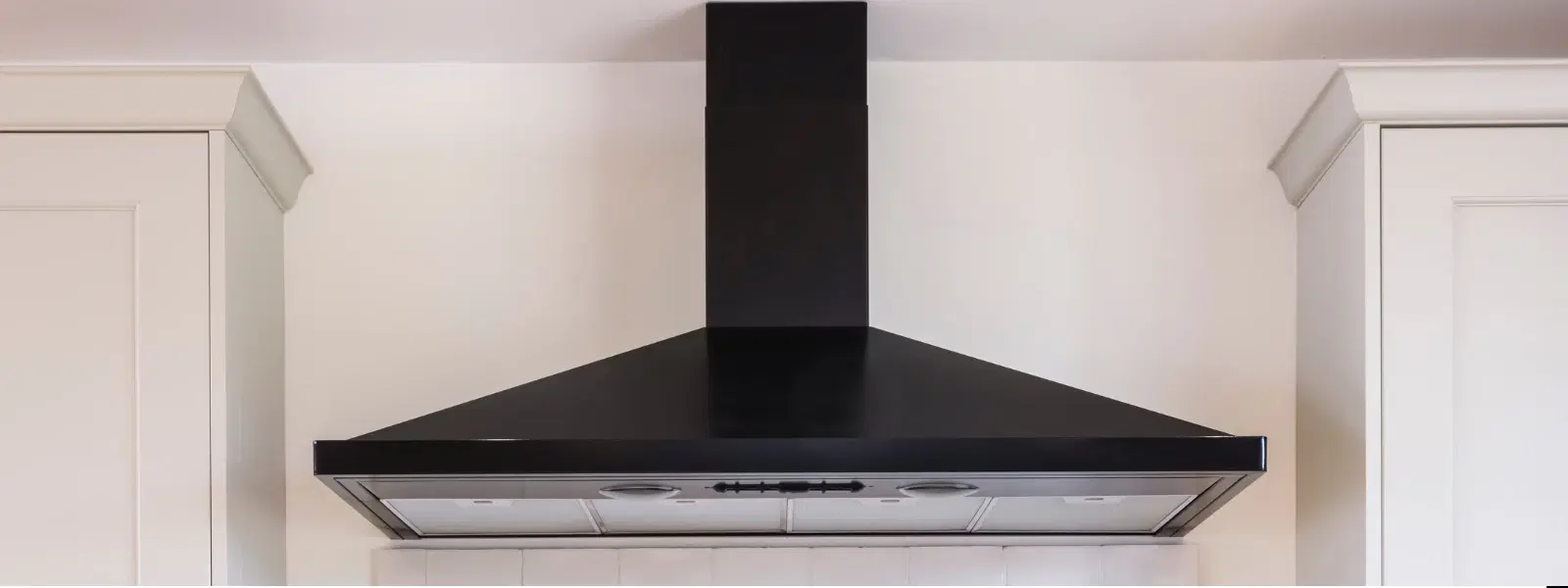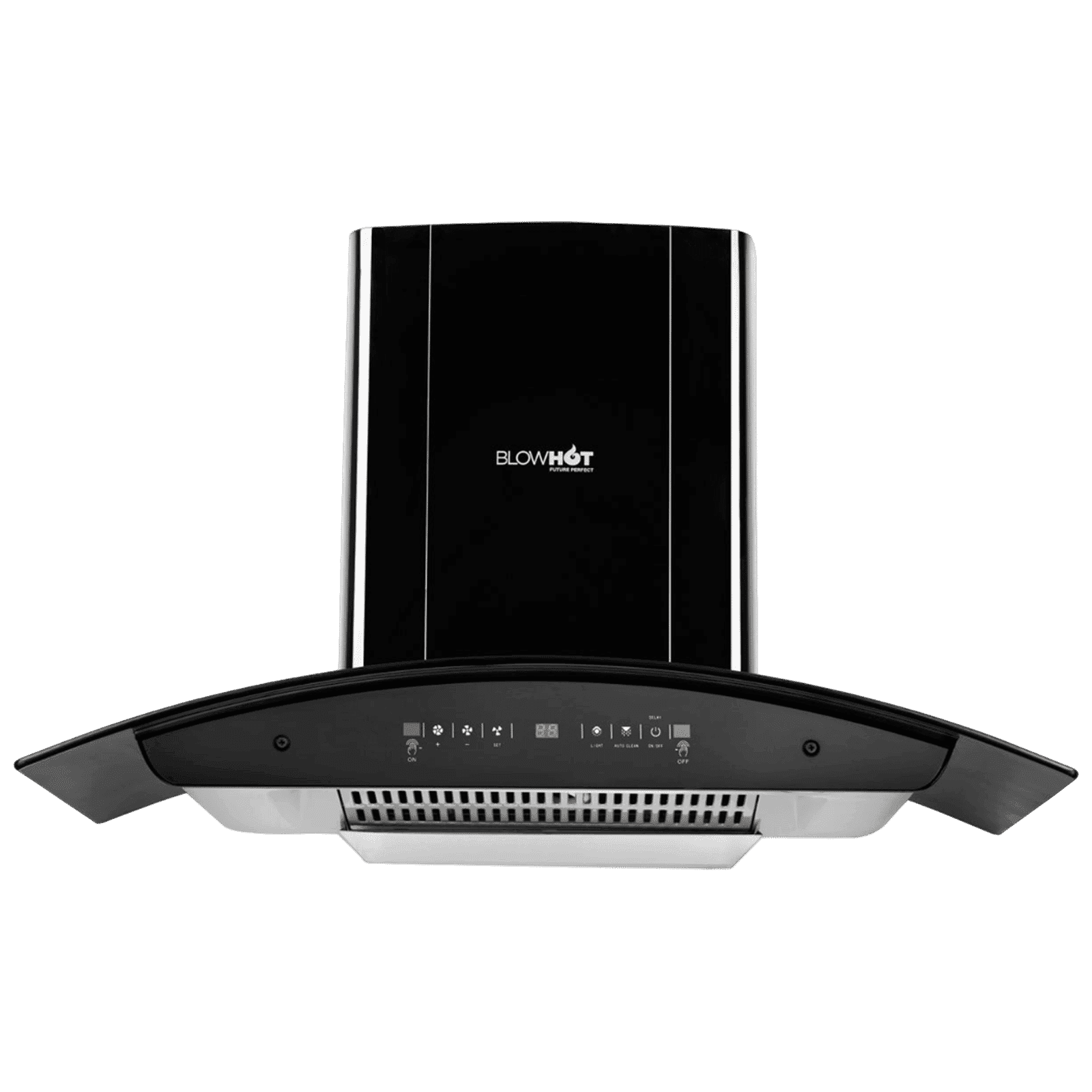
Home Appliances
•04 min read

Buy BLOWHOT ERICA TAC MS PLUS 90cm 1450m³/hr Ductless Auto Clean Wall Mounted Chimney with Motion Sensor (Black) online at best prices from Croma. Check product details, reviews & more. Shop now!
Imagine lighting a cozy fire or cooking in your kitchen, only to be met with smoke filling the room instead of gracefully venting upward. Understanding the intricacies of a smoke chimney can help you troubleshoot such issues and ensure a smoke-free environment at home. In this post, you'll learn about common challenges with smoke chimneys, discover expert answers to frequently asked questions, and explore practical solutions to maintain ideal chimney air circulation and safeguard your home.
A smoke chimney is a specialised structure designed to channel smoke safely away from your living spaces. Whether it is for a fireplace, a grill setup, or a kitchen installation, its core function remains the effective removal of smoke. Each type of chimney is crafted to suit its application: kitchen chimneys are engineered to tackle persistent Kitchen Chimney smoke, while those used in living spaces are tuned to enhance home comfort.
Homeowners often experience issues such as chimney backdraft, where smoke flows back into the room, or notice persistent white smoke when trying to maintain a fire. Other common signs include a visible blockage within the chimney structure or the absence of proper fire draw. Recognising these symptoms early can help in timely chimney cleaning and maintenance, ensuring your smoke ventilation system functions optimally.
Several factors can lead to unwanted smoke from a chimney. One of the main causes is poor air circulation, which prevents the smoke from escaping efficiently. Additionally, draft issues can arise when the temperature difference between the interior and exterior fails to create the necessary upward pull. Environmental factors such as cold weather or even a sudden change in wind direction can further obstruct the chimney air circulation, making the smoke linger longer than it should.
Obstructions in the chimney are often due to debris accumulation or a build-up of creosote – a by-product of burning. Without regular chimney cleaning tips and proper maintenance, these obstructions can become a major problem. This not only leads to persistent chimney smoke but also risks the overall safety of your smoke ventilation system. Understanding these maintenance concerns helps you adopt a proactive approach to stave off future issues.
When your chimney begins to exhibit signs of smoky distress, taking prompt action is essential. Start with a thorough cleaning to remove any built-up residue that may be affecting the draft. A detailed step-by-step approach includes checking for obstructions, ensuring there are no structural issues, and confirming that the smoke ventilation system is clear. For more persistent problems like back puffing or draft inconsistencies, it is wise to seek the expertise of professionals who can conduct a comprehensive chimney inspection and maintenance guide review.
A robust smoke ventilation system, including a high-quality smoke exhaust fan, plays a crucial role in maintaining a smoke-free environment. Installing a well-designed smoke extractor for home use can significantly improve air circulation and reduce Kitchen Chimney smoke. Modern smoke extractors are particularly beneficial in kitchens where cooking generates large amounts of steam and by-products, helping the whole setup maintain its efficiency.
Pro Tip from Tata Neu: Regular chimney cleaning is the cornerstone of a smoke-free home. Scheduling annual inspections ensures optimal performance and prevents costly repairs down the road.
Proper chimney cleaning is more than just a one-time task. While DIY cleaning methods can be effective for routine upkeep, there are specific scenarios where professional cleaning is necessary. Regularly inspect your chimney for any hints of creosote build-up or smoke obstruction and utilise recommended cleaning tools and products to maintain efficiency. With targeted chimney cleaning tips, even minor issues can be averted before they escalate.
For sustained chimney performance, implementing a seasonal chimney maintenance guide is key. Whether it's the dry heat of summer or the chill of winter, ensuring proper indoor-outdoor temperature differences promotes effective airflow. Regularly check your smoke ventilation system, and don’t neglect routine maintenance of your smoke exhaust fan. This prevents the accumulation of debris and keeps your chimney functioning at peak performance, contributing to an uninterrupted smoke extractor for home setup.
Kitchen chimneys often face unique challenges. The close proximity to cooking activities means they are more prone to gathering smoke and grease residue. This often results in kitchen chimney smoke that not only affects air quality but also gives the kitchen an unclean appearance. Understanding the causes behind this issue is the first step in implementing effective solutions.
Implementing innovative chimney installation ideas can significantly reduce the onset of smoke in your kitchen. Besides ensuring that your kitchen chimney is appropriately sized, integrating an efficient smoke exhaust fan can further enhance air extraction. Smoke-free kitchen solutions focus on merging aesthetics with functionality, ensuring that every cooking session is followed by a breath of fresh air. Leveraging these methods helps you enjoy both efficient cooking and a comfortable home environment.
This idiom refers to someone who smokes cigarettes excessively rather than the practical operation of a chimney.
Common causes include poor air circulation, build-up of creosote and debris, and external environmental influences like wind and cold weather.
Fixing a smoky chimney generally involves thorough cleaning, verifying proper ventilation, and addressing draft issues. In some cases, calling in a professional chimney sweep to conduct a full evaluation is advisable.
In summary, maintaining a smoke chimney in optimal condition is essential for any home, whether dealing with a kitchen chimney or a traditional fireplace setup. By understanding the causes of chimney smoke, following vetted chimney cleaning tips, and adopting a proactive chimney maintenance guide, homeowners can enjoy a home that remains comfortable and smoke-free. Enriching your space with a high-performance smoke ventilation system or a smoke extractor for home use is a wise investment in long-term home safety and comfort. With regular upkeep and expert advice integrated into your routine, you can slip into the ease and convenience of a smoke-free living environment, much like the seamless shopping experience offered by our platform. Enjoy the peace of mind that comes from knowing you have the right information to keep your chimney performing its crucial role efficiently.